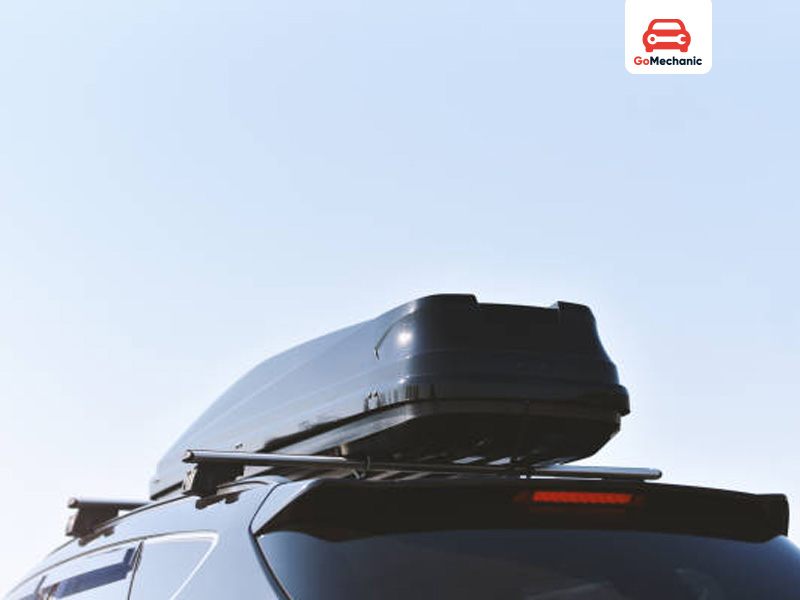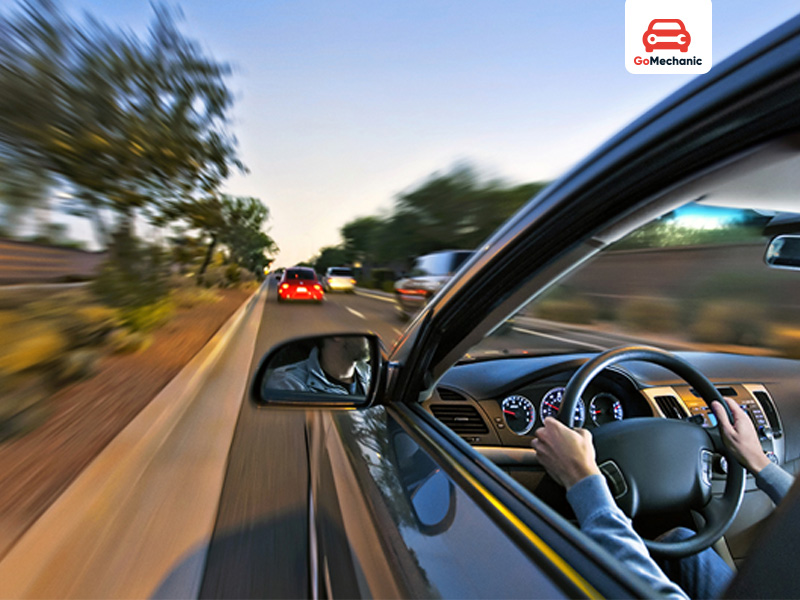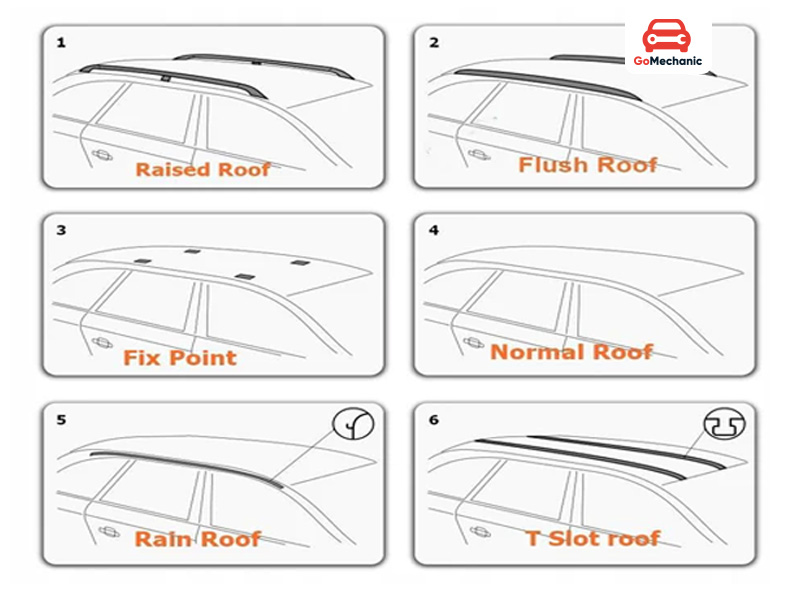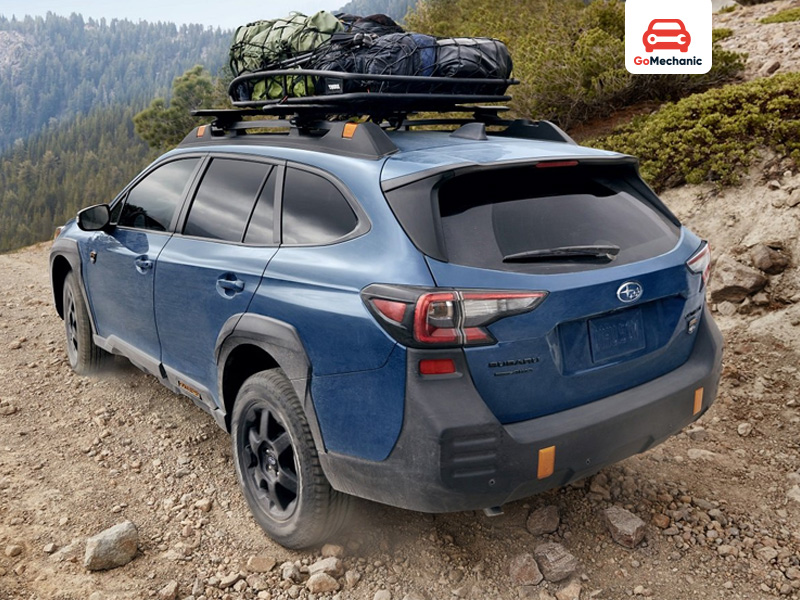Roof rails. You’ve seen them. On SUVs. On crossovers. On wagons. Sitting up top, running from front to back. Some? Just for looks. Others? Built for function.
But what exactly do they do? What are roof rails on a car? Are they just a design trend? Do they actually make a difference? More importantly—do you need them?
For some, they’re essential. Extra storage. Adventure-ready. A game-changer for road trips. For others? Just another styling element that never gets used. So, before you add them or dismiss them, let’s break it down. What roof rails really do, how they work, and whether they’re worth it for you.
What Are Roof Rails on a Car?
Strong. Sturdy. Fixed. Roof rails stretch from front to back. They create a base. A foundation for more. Roof racks, cargo carriers, bike mounts, rooftop tents are all locked onto them, all rely on them to stay secure. Roof racks run across. Roof rails run along. One holds the load. The other makes it possible. So, what are roof rails on a car for? They don’t hold cargo directly. They anchor the systems that do. And that makes all the difference.
They aren’t just design elements. They are functional. And in the right situations, they’re essential.
Use of Roof Rails in Car
Roof rails aren’t for decoration. At least, not originally. Their real purpose? Expanding your car’s cargo capacity.

Here’s the use of roof rails in car:
- Carrying Extra Luggage
When your boot space runs out, the roof becomes your next storage option. Attach a roof box or cargo bag to the rails, and suddenly, you have room for more. This is the most important use of roof rails in cars. Long road trips? Family vacations? Overlanding adventures? Roof rails make a difference.
- Mounting Sports Equipment
Love cycling? Skiing? Surfing? Roof rails give you options. Attach racks for bikes. Mount skis. Secure kayaks. Travel ready. Your gear stays secure, freeing up space inside the vehicle.
- Setting Up a Rooftop Tent
Overlanding is growing in India. More SUVs are heading off-road. More travelers are camping on rooftops. Roof rails make it possible. They hold the tent. Keep you off the ground. Away from rough terrain. Safe from wildlife.
- Transporting Bulky Items
Ever tried fitting a ladder inside a car? Not happening. Pipes, wooden planks, and long items that won’t fit in the boot can be secured to roof rails with the right attachments. It’s like adding a mini truck bed to your car.
Do read: How Useful Are Roof Rails On Indian Cars!
Who Needs Roof Rails?
Not everyone. But if you fall into these categories, roof rails are more than just an accessory:

- Frequent Travelers: Long road trips mean extra luggage. Roof rails let you carry more without cramming everything inside.
- Outdoor Enthusiasts: Campers, hikers, and explorers rely on roof rails. More gear. More adventure. Less hassle.
- Families with Full Cars: A fully occupied 7-seater leaves almost no boot space. Roof storage is the only option.
- Cyclists and Kayakers: Need to transport your gear? Roof rails give you a solid mounting base.
Who Should Skip Roof Rails?
Not all cars need them. Here’s when you might want to skip them:
- If your car has a panoramic sunroof, roof rails come with limits. They reduce how much weight you can carry. In some cases, you can’t even install them.
- If you never carry extra cargo – No road trips? No bulky items? No need for rails.
- If you only like the look – Some cars come with fake roof rails, installed just for aesthetics. They do nothing. If you’re adding rails just for style, consider if it’s worth the cost.
Know more about: New Maybach GLS 600 and EQS 680 by Mercedes-Benz Launched in India: A Bold New Era of Luxury
Are Roof Rails Really Useful?
It depends. For many, they’re a necessity. For others, they’re just a design element.
If you need more space, haul roof-mounted gear, or crave adventure beyond city roads, roof rails make sense. But if your drives are just daily commutes and the occasional weekend outing, they might sit there, unused.
Types of Roof Rails
Not all roof rails are the same. Depending on your car and how you plan to use them, you might come across different types:

- Factory-Fitted Roof Rails
- Installed by the manufacturer.
- Often designed to support specific accessories.
- Common on SUVs and crossovers.
- Aftermarket Roof Rails
- Installed separately if your car doesn’t come with them.
- Available in different designs and materials.
- Can be functional or just for looks.
- Flush vs. Raised Roof Rails
- Flush Roof Rails: Sit tightly against the roof, giving a streamlined look. They often require specialized mounting brackets.
- Raised Roof Rails: Have a visible gap between the rail and the car roof, allowing easy attachment of roof racks and accessories.
Installation and Load Capacity
If you’re installing roof rails, here’s what you need to know:

- Weight Limits:
Every car has a roof weight limit. Check your owner’s manual before loading up. Exceeding this limit affects stability and fuel efficiency.
- Proper Mounting:
– Factory-fitted rails are secure. Aftermarket ones need professional installation to avoid damage.
- Aerodynamics & Fuel Economy:
– Roof rails create wind resistance. Adding a loaded cargo box or rack increases drag, which can impact fuel efficiency.
- Legal Restrictions:
– In India, roof load limits exist. Exceed them, and you risk fines, instability, or worse.
Should You Get Roof Rails?
If you need extra cargo space, carry sports gear, or plan road trips often, roof rails are a must-have. They give you flexibility, expand storage, and make your vehicle more practical. But if your car never carries anything beyond grocery bags? If you never hit the highway for long trips? If they’re just for looks? Then you don’t really need them. Function over fashion. That’s the real story of roof rails. Use them right, and they make a difference. Otherwise, they’re just another piece of metal on your car.
Do read: Honda Motocompacto: Revolutionizing Urban Mobility with a Foldable Twist
FAQs About Roof Rails
1. Can I add roof rails to any car?
Most vehicles can have aftermarket roof rails installed, but structural limitations exist for some models. Always check compatibility.
2. Do roof rails affect mileage?
Yes. Roof rails alone have minimal impact, but adding racks, carriers, or cargo increases drag, which can reduce fuel efficiency.
3. Are roof rails removable?
Factory-fitted roof rails are permanent. Aftermarket ones can sometimes be removed but may leave marks or require additional work.
4. Can I carry heavy luggage on roof rails?
It depends on the car’s roof load rating. Most passenger cars can handle 50–100 kg, while SUVs may allow more.
5. What are roof rails in cars?
Roof rails are the long strips you see running from front to back on the roof of a car, usually fixed close to the edges. They act as a support system when you want to carry extra luggage, fit a roof box, or even mount a cycle holder. SUVs were the first to get them, but now even hatchbacks and sedans often carry them for style.
6. Are roof rails legal in India?
Yes. Roof rails or luggage carriers are not banned under the Motor Vehicles Act. You don’t need special approval from the RTO, and traffic police cannot fine you just for having them. The only thing that matters is that they are fitted safely and not used in a way that creates risk on the road.
7. Do roof rails reduce mileage?
Empty rails don’t really hurt your fuel economy. The issue starts when you put crossbars or cargo on them, because that adds weight and blocks airflow. In real driving, rails alone may change fuel use by about 1 percent, while a loaded rack can cut efficiency by 5 percent or more.
8. What’s the difference between roof rails and roof bars?
Rails run front to back, fixed to the roof. Bars go side to side, attached to those rails. Once the bars are on, you can mount boxes, bags, or sports gear. Rails spread the weight, bars carry the weight.
9. Can you remove roof rails on a car?
Yes, but it depends. Some factory rails are built into the design and don’t come off easily. Others, especially aftermarket ones, can be removed without much trouble. Keep in mind, taking them out may leave small marks or screw holes that need touch-up.
10. How do you clean and maintain roof rails?
Wash them with a mild soap solution and a cloth, nothing strong or abrasive. Once in a while check if the bolts are tight. Remove any rust patches quickly so they don’t spread. And when carrying gear, make sure the load is balanced and within the weight the roof can handle.







But they seem too weak to keep luggage over there. While I tried they were a little flexible and so I was scared to store the luggage.
Hi Krishna,
Many manufacturers these days are adding roof rails to make their cars look taller and bolder. The usability can be determined by the loading capacity of these rails.
How much load kay take the roof/roofrails? Can we mount a tent for 2occupancy?
Hi Rohan
You will have to check your car’s spec sheet for the load that your roof rails can take
What is the point of this article, it could have been finished in 3 words, NO they’re not
AAyega toh Kushaq hi! We truly support your decision! But it is wrong to say roof rails are not useful. They are definitely useful in case of some cars where they are meant to carry load. Imagine how useful they can be when you are on a road trip!
Thanks for this article. I have a venue and I feel roofrail are slippery and if I tie luggage, it may fall. I am also not sure what to use to tie the luggage.
Roof rails on the venue are not functional, Ankur
Is roof rails are useful in Hyundai santafe 7seater ?
If a top variant os a car has functional roof rails then can we install functional roof rail on a lower variant of same model
Scorpio roof rail is strong enough… could bear the weight,but bolero Bs6 is just just for looks… Discouraging….
for Your article to be useful, you should cover which cars have functional roof rails and what aftermarket products are available in this area to get good functional roof rails. The current article feels very superficial.